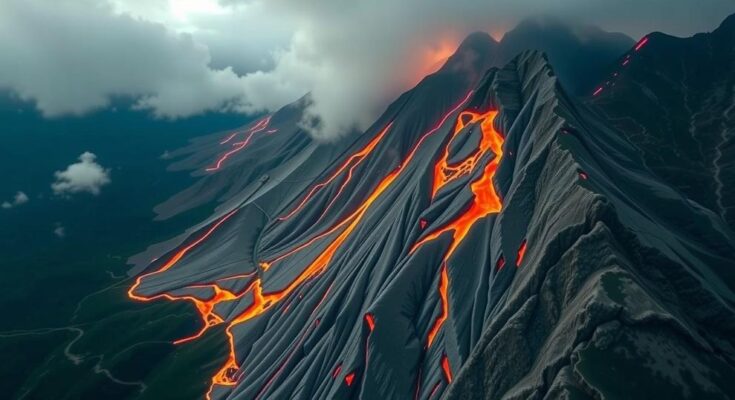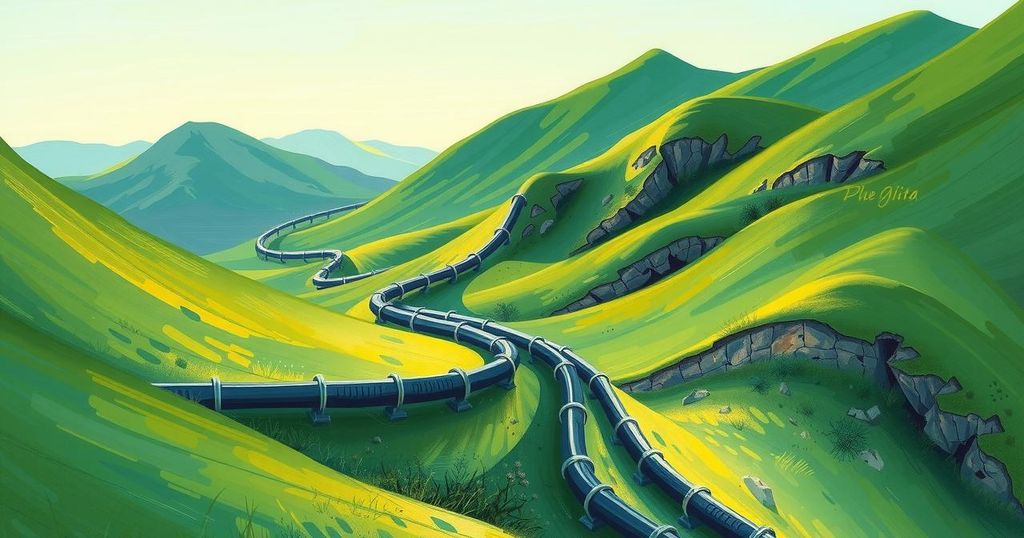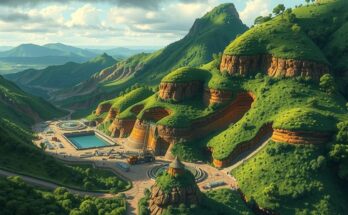A mountain collapse in the Democratic Republic of Congo has revealed extensive copper deposits, raising discussions about colonialism and foreign exploitation of resources. The incident occurred in the mineral-rich Katanga region, highlighting the value of Congolese copper in global markets while sparking online reactions calling for the protection of these resources from foreign entities.
A recent mountain collapse in the Democratic Republic of Congo (DRC) has unveiled significant copper reserves, igniting discussions regarding colonial exploitation and resource management. This event, which transpired in the mineral-abundant Katanga region, showcased a dramatic display as numerous individuals congregated to witness the incident. Footage captured the chaotic scene, with onlookers scattering as boulders descended from the mountain, highlighting both the natural hazards of mining activities and the potential maritime shifts in mineral ownership. Copper, a critical resource for various industries, is particularly abundant in the DRC, especially in the Katanga region. This area is recognized as part of the Central African Copperbelt, containing some of the world’s most substantial high-grade copper deposits. The commercial viability of Congo’s copper is heightened by its high quality and low extraction costs, emphasizing its significance in global markets, particularly amid a rising demand for sustainable energy solutions. The online discourse surrounding the collapse reflects a growing concern about foreign exploitation of Congolese minerals. Many social media users have expressed strong sentiments regarding the necessity of safeguarding these resources from outside influences. Comments ranged from outright calls to prevent entry to Western nations, likening current demands for copper to historical colonial practices. One comment poignantly stated, “Congo needs to ban entry of Britain and other westerners in view of the mountain collapse revealing minerals to keep them safe,” accentuating the urgent protective sentiment encapsulated in many reactions.
The Democratic Republic of Congo is renowned for its rich mineral resources, with copper being one of its most valuable assets. The Katanga region, known for its significant copper reserves, has been a focal point for mining activities due to its proximity to the Central African Copperbelt. This mineral belt is among the richest in the world, holding substantial deposits not only of copper but also of cobalt, uranium, tin, and zinc. As global demands for electric vehicles and renewable energy sources intensify, the value of Congolese copper surges, emphasizing the need for responsible management and equitable distribution of this vital resource. The mountain collapse serves as a reminder of both the potential dangers of mining operations and the historical context of resource extraction in the region.
In summary, the collapse of a mountain in the Democratic Republic of Congo has uncovered vast copper reserves while reigniting discussions surrounding colonialism and resource management. The incident serves not only as a testament to the mineral wealth of the region but also as a stark reminder of the historical exploitation that has often characterized foreign interests in Congolese resources. The urgency to protect these minerals from external forces is echoed in the voices of many online, advocating for sovereignty and ownership of natural resources by the Congolese people.
Original Source: www.hindustantimes.com




